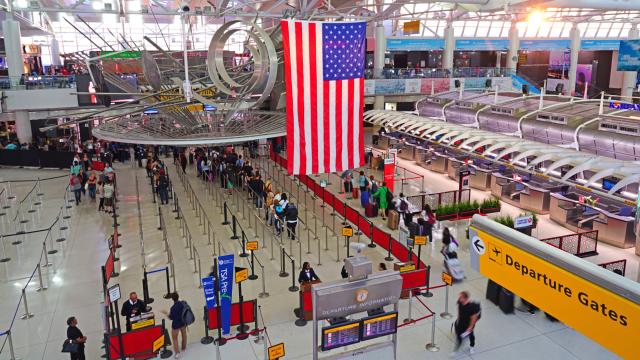Nearly six months ago, all the way back in mid-March, the Trump administration issued an order banning travel from Europe, Brazil, Iran and China. There was an exception to this rule: U.S. citizens, lawful permanent residents and their family members have been permitted to reenter the country as long as they flew into one of 15 designated American airports, and underwent an enhanced entry screening. But on Monday, September 7, this policy changed, according to Yahoo News, which broke the story. Here’s what you need to know about the updated travel regulations.
[referenced id=”1008290″ url=”https://www.lifehacker.com.au/2020/09/stay-up-to-date-on-covid-travel-restrictions-with-this-interactive-map__trashed/” thumb=”https://www.gizmodo.com.au/wp-content/uploads/sites/4/2020/09/11/v5kju6l6uk8hcoz9xb7x-300×169.jpg” title=”Stay Up-to-Date on COVID Travel Restrictions With This Interactive Map” excerpt=”Since the beginning of the COVID-19 pandemic, travel has been a complete mess. Given that travel restrictions are an important part of containing the spread of infectious disease, this makes sense. And at first, most people did stay put, avoiding air travel and remaining in their homes (or second homes).”]
What has changed about COVID screening policies?
In short, those with permission to reenter the U.S. will no longer have to fly through one of these 15 screening airports en route to their final destination:
- Boston-Logan International Airport (BOS), Massachusetts
- Chicago O’Hare International Airport (ORD), Illinois
- Dallas/Fort Worth International Airport (DFW), Texas
- Detroit Metropolitan Airport (DTW), Michigan
- Daniel K. Inouye International Airport (HNL), Hawaii
- Fort Lauderdale-Hollywood International Airport (FLL), Florida
- George Bush Intercontinental Airport (IAH), Texas
- Hartsfield-Jackson Atlanta International Airport (ATL), Georgia
- John F. Kennedy International Airport (JFK), New York
- Los Angeles International Airport, (LAX), California
- Miami International Airport (MIA), Florida
- Newark Liberty International Airport (EWR), New Jersey
- San Francisco International Airport (SFO), California
- Seattle-Tacoma International Airport (SEA), Washington
- Washington-Dulles International Airport (IAD), Virginia
When the new policy takes effect at 12:01 a.m. on Monday, September 14th, it will end the mandatory COVID screening requirement for passengers arriving from outside the country.
[referenced id=”961713″ url=”https://www.lifehacker.com.au/2020/08/what-to-know-about-changes-to-the-cdcs-14-day-quarantine-travel-policy__trashed/” thumb=”https://www.gizmodo.com.au/wp-content/uploads/sites/4/2020/08/26/b3u3wtobl6ootjtqjdit-300×169.jpg” title=”What to Know About Changes to the CDC’s 14-Day Quarantine Travel Policy” excerpt=”One of the biggest changes to travel during COVID-19 is the Centres for Disease Control’s (CDC) recommendation of a 14-day quarantine after you travel internationally or across state lines. Or it was, until Friday, August 21, when the CDC updated its travel guidelines, quietly dropping the 2-week quarantine recommendation. So…”]
What does this mean for public health?
Great question — after all, we are still in the midst of a global pandemic. Let’s look back at the policy that’s been in place for the past several months. Basically, passengers returning to the U.S. have been sent to airport screeners who took their temperature and asked a series of health-related questions, including whether they’ve been experiencing any of the classic COVID-19 symptoms.
Part of the screening process requires travellers to provide their contact information, in the event that it’s needed for contact tracing purposes. But under the updated policy, if a passenger may have potentially been exposed to someone with COVID-19, it will make getting in touch with them considerably more difficult (or at least more time-consuming).
While the new policy will likely make travel more convenient for those flying internationally, it doesn’t seem like the best move from a public health perspective. At this point, we’re not really in a place where we can afford to make contact tracing harder. And while not everyone with COVID has a fever (and vice versa), the airport health screenings at least provided some attempt to help slow the spread of the novel coronavirus, and acknowledge the continuing global pandemic.

Leave a Reply
You must be logged in to post a comment.